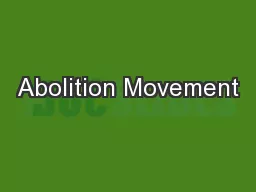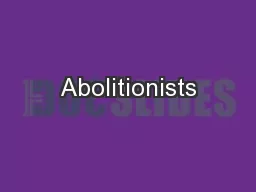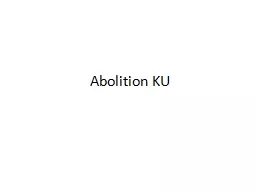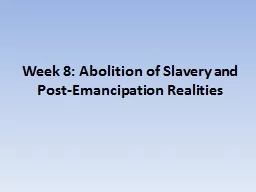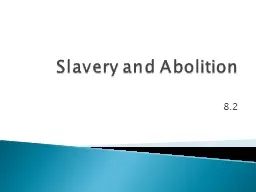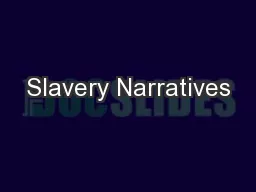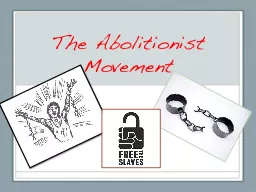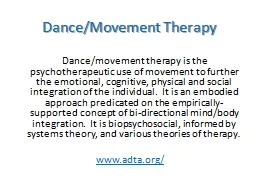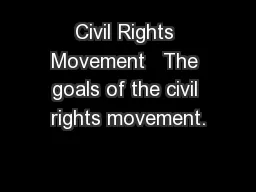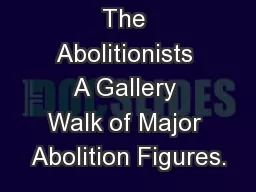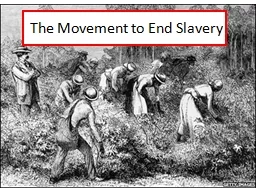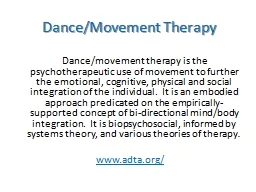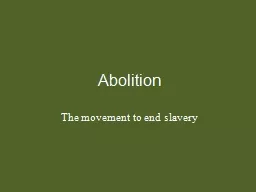PPT-Abolition Movement
Author : lois-ondreau | Published Date : 2017-06-05
Bellwork Read the primary source What point is the author trying to make I am aware that many object to the severity of my language but is there not cause for severity
Presentation Embed Code
Download Presentation
Download Presentation The PPT/PDF document "Abolition Movement" is the property of its rightful owner. Permission is granted to download and print the materials on this website for personal, non-commercial use only, and to display it on your personal computer provided you do not modify the materials and that you retain all copyright notices contained in the materials. By downloading content from our website, you accept the terms of this agreement.
Abolition Movement: Transcript
Download Rules Of Document
"Abolition Movement"The content belongs to its owner. You may download and print it for personal use, without modification, and keep all copyright notices. By downloading, you agree to these terms.
Related Documents

